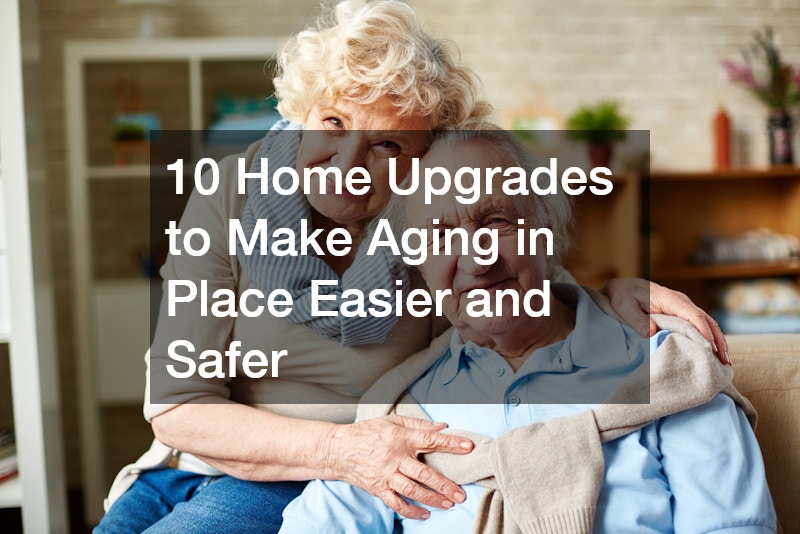As we age, staying in the comfort of our own home becomes increasingly important. Aging in place allows individuals to maintain independence and live in familiar surroundings while adapting the home to meet changing needs. With thoughtful modifications, your home can remain a safe and comfortable environment for years to come.
Before starting any upgrades, it’s essential to assess your space to determine what needs to be modified. Take note of areas where mobility might be restricted, such as narrow doorways, uneven flooring, or hard-to-reach areas. Consider the specific needs of the individual(s) living in the home—whether they use a wheelchair, walker, or simply need more support while moving around. A professional assessment can provide valuable insights into which improvements will be most effective. Whether you’re planning small adjustments or major changes, an accessibility renovation will ensure your home is both functional and safe.
1. Improving Lighting for Safety and Comfort
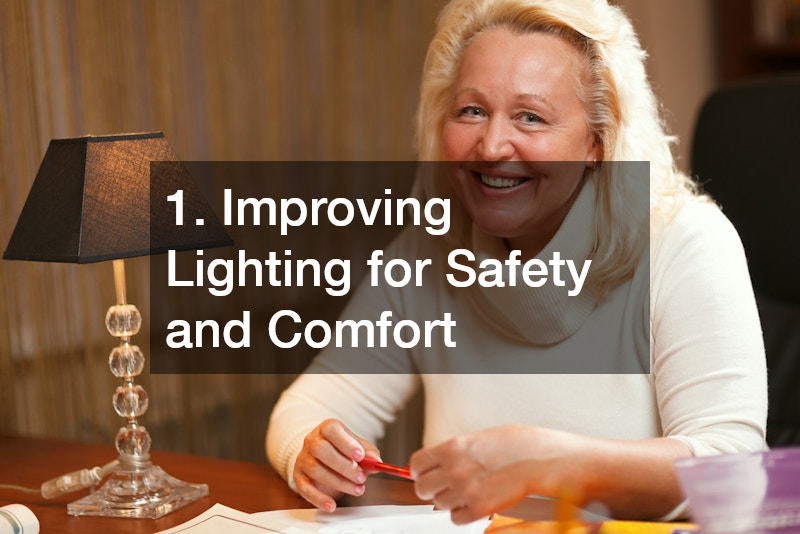
One of the simplest and most impactful upgrades you can make in your home is improving lighting. Proper lighting enhances safety by reducing the risk of falls and accidents, while also creating a more comfortable and welcoming environment.
Bright, Even Lighting:
Ensure all areas of your home, especially hallways, stairways, and bathrooms, are well-lit. Consider installing bright, energy-efficient LED bulbs to ensure clarity without excessive glare. You may also want to add motion-activated lights in areas where you frequently walk, such as the kitchen and bathroom, to avoid fumbling for switches in the dark. If you’re unsure about electrical work, hiring a residential electrician can help ensure your lighting is installed safely and efficiently.
Task Lighting:
For activities like reading or cooking, task lighting is crucial. Under-cabinet lighting in the kitchen or a reading lamp next to your favorite chair can make tasks easier. Adjust lighting angles to reduce shadows and increase visibility.
Dimmers and Timers:
Installing dimmer switches allows you to control the intensity of light to suit your needs at any given time. Additionally, timers or smart lighting systems can automatically adjust brightness based on the time of day, reducing the need for manual adjustments.
2. Making Stairs Safer: Ramps and Stairlifts
Stairs can pose a significant challenge as mobility decreases with age. A thoughtful approach to navigating stairs or eliminating them altogether can make a big difference in preventing falls.
Ramps:
If you or a loved one use a wheelchair, walker, or cane, installing ramps in place of stairs can provide safer access to different levels of the home. Modern ramps are often designed to blend seamlessly into your home’s exterior or interior, and can be customized for different spaces.
Stairlifts:
For homes with multiple levels and stairs that cannot be easily replaced with ramps, a stairlift can be a lifesaver. Stairlifts are powered chairs that glide along a track, helping individuals safely navigate stairs. Many models are now designed to be compact and stylish, so they don’t disrupt the aesthetic of your home. Installing a stairlift allows individuals to maintain their independence and safety without the fear of falling. When considering this upgrade, hiring a chair lift installer ensures that the stairlift is properly fitted and safely installed to provide long-term support and convenience.
3. Installing Grab Bars and Handrails
Adding grab bars and handrails throughout the home can offer substantial support for daily activities. These simple additions can help prevent falls, provide balance, and promote greater confidence when moving around.
In the Bathroom:
The bathroom is one of the most common places for falls to occur. Install grab bars near the toilet, in the shower, and alongside the bathtub to provide support when getting in and out. These bars offer peace of mind and can be placed in discreet locations to match your bathroom’s design.
Along Stairs and Hallways:
In addition to stairlifts, handrails on both sides of the stairs provide critical support while ascending and descending. For hallways, consider adding a handrail along one wall to help with balance when walking or when turning corners. For a more durable and sleek look, you may want to consider stainless steel fabrication for your handrails and grab bars, as stainless steel offers long-lasting strength and an attractive finish that complements modern home decor.
4. Widening Doorways and Hallways for Better Mobility
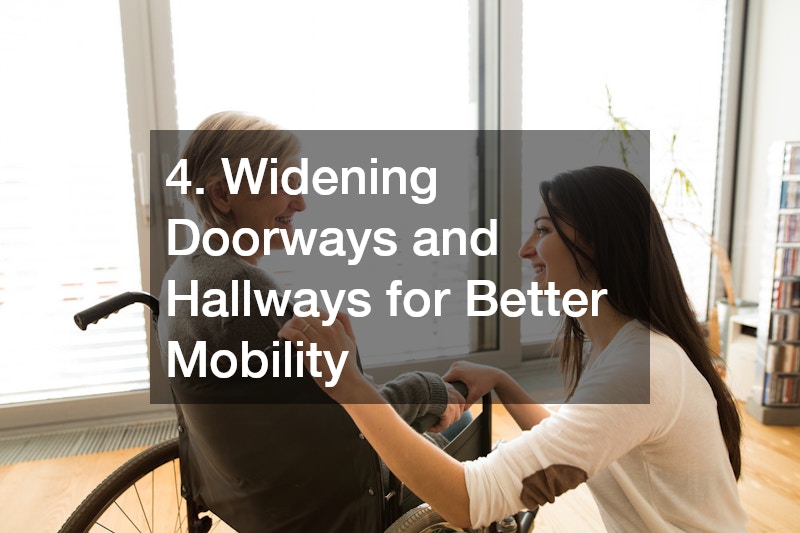
Accessibility in a home means being able to navigate spaces comfortably and without restriction. Narrow doorways and hallways can be limiting, especially for individuals using mobility aids such as wheelchairs or walkers.
Widening Doorways:
In order to accommodate mobility devices, the minimum width of doorways should be at least 32 inches, though wider is often better. This allows for easy passage of walkers, wheelchairs, or scooters. If you’re planning to renovate, consider widening doors to make movement within rooms and between spaces smoother and more comfortable.
Hallway Adjustments:
Widening hallways ensures there’s enough space to maneuver a wheelchair, walker, or even a person with limited mobility. Removing any obstructions, like furniture or rugs, can further enhance the flow of movement. Keeping hallways open and clear of clutter is crucial for maintaining a safe environment.
5. Upgrading Your Bathroom for Maximum Safety
The bathroom is one of the riskiest areas in the home, with its combination of wet surfaces and tight spaces. Upgrading your bathroom with safety in mind can make a world of difference for aging individuals.
Walk-In Showers:
Traditional bathtubs may become difficult or dangerous to access as you age. Replacing a bathtub with a walk-in shower provides easier access without the need to step over high edges. Choose a shower design with a non-slip floor and a low threshold to further reduce the risk of falls.
Non-Slip Flooring:
Installing non-slip flooring in both the bathroom and shower area helps prevent accidents. Materials like rubber, textured vinyl, or slip-resistant tiles provide better traction, particularly in wet areas.
Shower Seats and Handheld Shower Heads:
If standing in the shower becomes difficult, consider adding a foldable shower seat. A handheld shower head allows for easier movement while showering, as it can be adjusted to various heights and angles. When making these upgrades, it’s essential to consult a plumbing professional to ensure that the installation is done correctly, particularly for features like showerheads, drains, and waterlines.
6. Kitchens That Work for You: Accessible Cooking and Dining
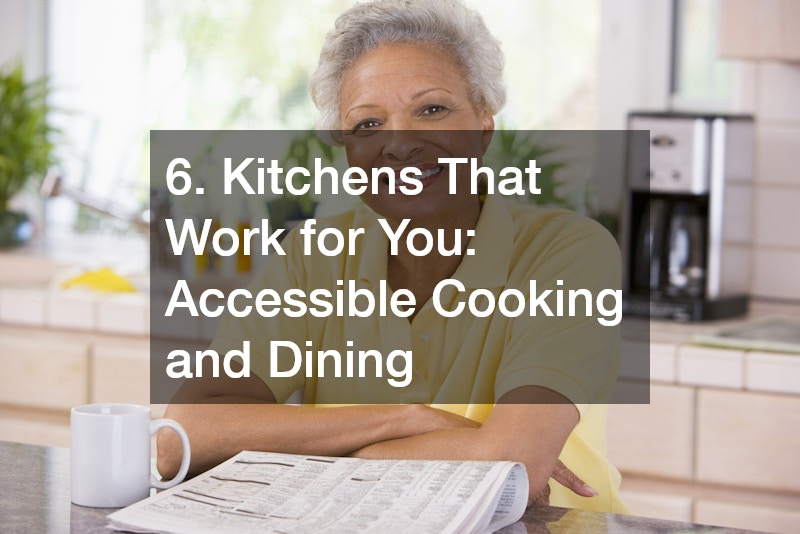
The kitchen is the heart of the home, but it can also be one of the most difficult areas to navigate as mobility and flexibility decrease. A kitchen upgrade with accessibility in mind makes cooking and dining safer and more enjoyable.
Lower Countertops and Cabinets:
For wheelchair users or those with limited mobility, lower countertops and cabinets can make cooking and food preparation more manageable. Countertop installation services can help you select and install the right materials for these custom heights. Adjustable-height counters are also available, providing versatility for different users.
Pull-Out Shelves and Lazy Susans:
Install pull-out shelves in cabinets to easily access pots, pans, and other cooking essentials. A lazy Susan can also be added to cabinets or pantry spaces for easier access to items stored at the back.
Easy-to-Use Appliances:
Consider upgrading to appliances that are easy to use, such as touchless faucets, front-control stoves, and high-contrast dials on microwaves and ovens. These can simplify cooking tasks and make them safer for aging individuals.
Water Purification System:
A water purification system can also enhance your kitchen by providing clean, safe drinking water for cooking and hydration. High-quality water purification systems guarantee access to pure water, which is particularly important for those with health concerns or weakened immune systems.
7. Smart Home Technology for Greater Independence
Smart home technology can revolutionize aging in place by providing additional support and convenience, all while promoting greater independence.
Voice-Activated Devices:
Smart devices like voice-activated assistants (Google Home, Amazon Alexa) can help individuals control lights, thermostats, and entertainment systems with simple voice commands. These devices can also be used to call for help in emergencies or set up reminders for medication or appointments.
Smart Thermostats and Sensors:
Smart thermostats allow individuals to adjust home temperatures easily, promoting comfort and energy efficiency. Motion sensors and smart doorbells can provide extra security by alerting users when someone is at the door or when activity is detected around the house.
Remote Health Monitoring:
Some smart devices are designed to monitor health metrics, such as blood pressure, heart rate, and oxygen levels. These can be synced with mobile apps to keep caregivers or family members updated on the health status of the individual.
8. Accessible Furniture for Comfort and Ease
Furniture plays a significant role in your daily comfort, and making the right choices can help you move more freely around your home.
Lift Chairs and Recliners:
Lift chairs provide extra assistance when standing up from a seated position. They come with built-in motors that help gently raise the user to a standing position, reducing strain on the legs and back. A comfortable recliner can also improve relaxation and support when sitting for long periods.
Height-Adjustable Furniture:
Consider investing in furniture that can be adjusted to your comfort level, such as height-adjustable desks, tables, or chairs. These pieces are particularly helpful for dining or working in different seating positions, ensuring maximum comfort and safety.
Ergonomic Furniture:
Look for ergonomic furniture that provides proper back and joint support. Chairs with adjustable armrests and lumbar support are essential for maintaining posture and minimizing discomfort.
9. Maintaining Clear Pathways and Mobility Aids
Keeping pathways clear of obstacles is essential for maintaining a safe environment. When combined with mobility aids, it becomes easier to navigate around your home and perform everyday tasks.
Removing Tripping Hazards:
Ensure that there are no rugs, cords, or clutter that can cause tripping. Non-slip rugs or mats are better for safety, and any low furniture should be moved out of the way to allow for better maneuvering.
Using Mobility Aids:
Mobility aids such as walkers, canes, or rollators help individuals maintain stability and support. Ensure that these aids are in good condition, with non-slip rubber tips, and that there are enough clear spaces in your home for easy navigation.
Adjustable Lighting:
Adding adjustable lighting along key pathways, like hallways, can further reduce the chances of stumbling or bumping into furniture.
Proper Outdoor Pathways:
In addition to interior pathways, outdoor walkways should be carefully maintained to ensure safety. A paving contractor can help you install durable, slip-resistant paths or ramps that make it easier to get in and out of the house, especially during wet or icy conditions.
10. Outdoor Accessibility: Creating a Safe Yard or Garden
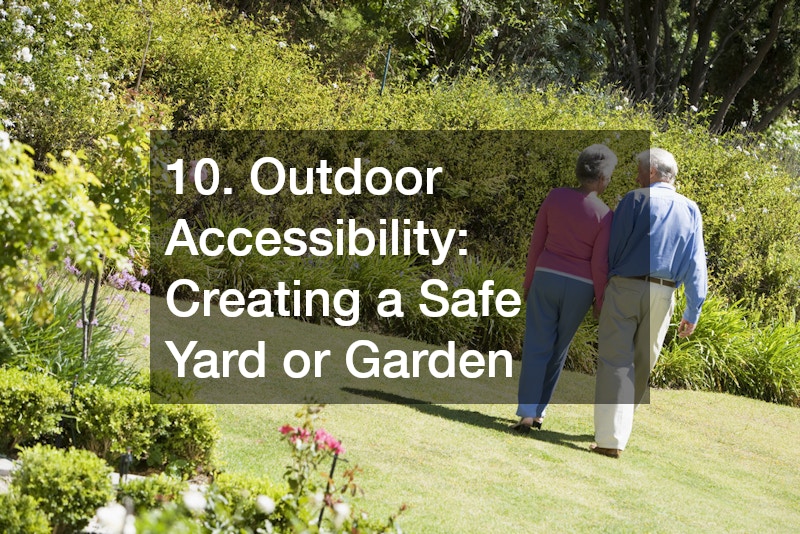
Outdoor spaces can significantly enhance the quality of life for older adults, but they need to be accessible and safe.
Raised Garden Beds:
Gardening is an enjoyable and therapeutic activity, but bending over to tend to plants can be difficult. Raised garden beds allow for easier access to plants without the need to bend down. These can be built at a height that is comfortable for individuals using a wheelchair or standing.
Outdoor Lighting:
Just like indoor lighting, outdoor lighting is crucial for safety and comfort. Install motion-sensor lights along walkways, steps, and garden paths to ensure visibility after dark. Bright outdoor lighting helps prevent accidents and makes outdoor spaces feel more inviting, even in the evening hours.
Accessible Seating Areas:
For those who enjoy spending time outdoors, having comfortable seating options is essential. Consider installing benches or chairs with armrests and back support, making it easier to sit and stand. These should be strategically placed in shaded or sheltered areas to promote relaxation without compromising comfort.
Clear and Safe Entrances:
Make sure that gates, fences, or other outdoor barriers are easy to open and close, especially for individuals with limited strength or mobility. Adding automatic openers for gates or using wide, accessible entry points will make outdoor spaces more accessible. Consider consulting fence companies to design and install gates that are easy to operate and durable for long-term use.
Patio Screens:
For added convenience, installing motorized power screens for patios can enhance comfort and accessibility. These screens provide shade, protect from insects, and can be adjusted with ease to meet the needs of users, creating a more enjoyable outdoor environment for individuals with varying levels of mobility.
Final Thoughts
Making your home safer and more comfortable for aging in place requires thoughtful upgrades that focus on both accessibility and safety. By addressing key areas like lighting, mobility aids, bathroom design, and smart home technology, you can create a living environment that supports independence and reduces the risk of accidents. These upgrades allow individuals to maintain their dignity, continue enjoying daily activities, and feel empowered to live comfortably and securely in their own homes for many years to come.
Investing in these home improvements not only enhances safety but also fosters a sense of autonomy and well-being. Whether you’re looking to make minor adjustments or undertake significant renovations, each change contributes to a home that works with your needs, supporting a fulfilling and independent lifestyle as you age.

